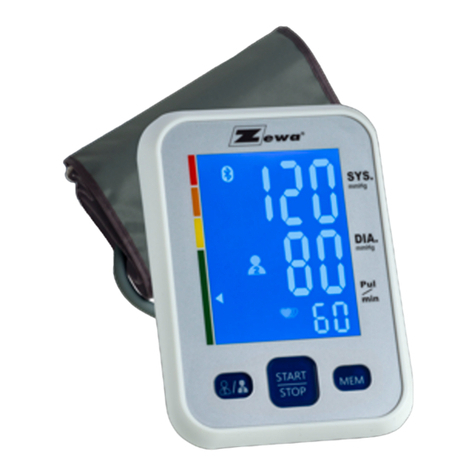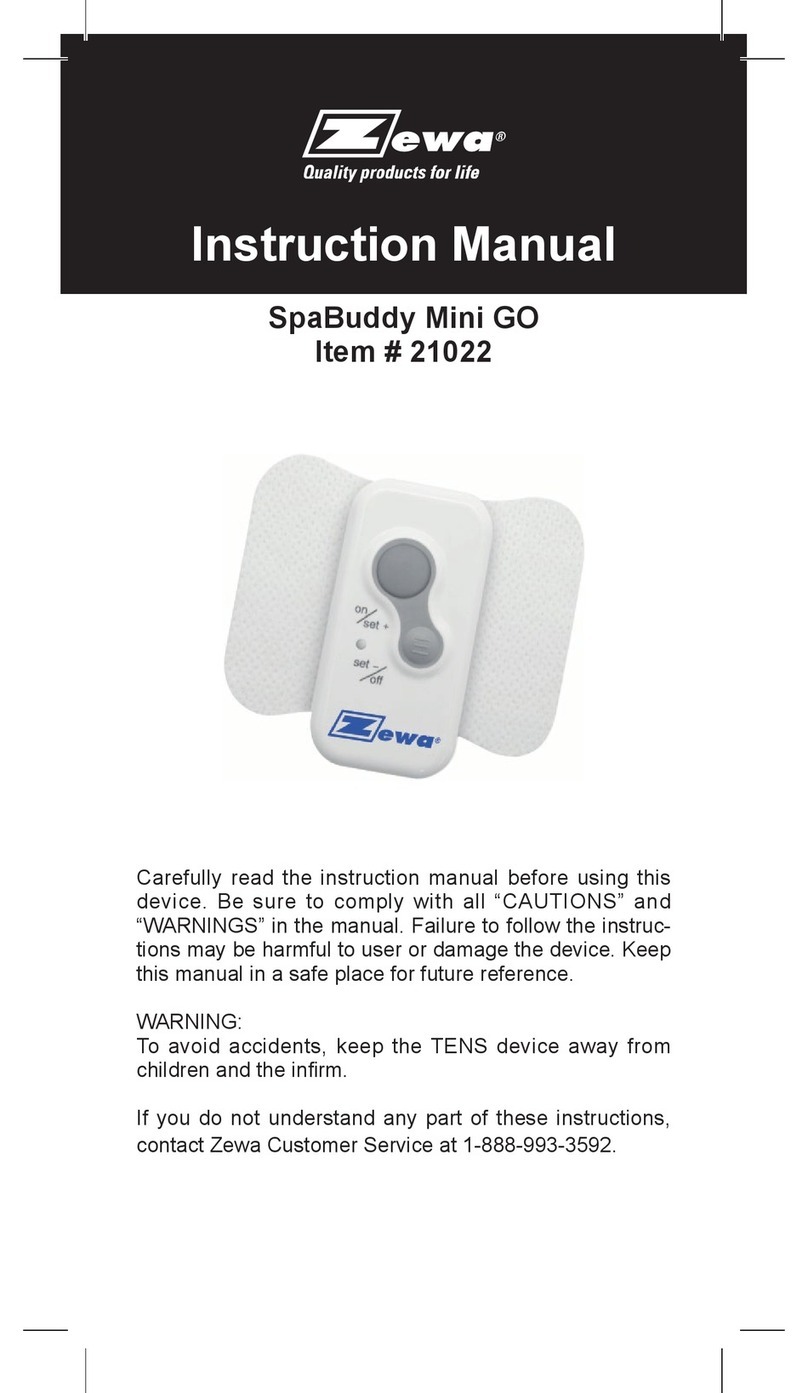INTRODUCTION
INTRODUCTION
45
CAUTION CAUTION
* This device is intended for adult use in homes only.
* The device is not suitable for use on neonatal patients, pregnant women,patients with
implanted, electronical devices, patients with pre-eclampsia, premature ventricular beats,
atrial fibrillation, peripheral, arterial disease and patients undergoing intravascular therapy or
arterio-venous shunt or people who received a mastectomy. Please consult your doctor
prior to using the unit if you suffer from illnesses.
* The device is not suitable for measuring the blood pressure of children. Ask your doctor
before using it on older children.
* The device is not intended for patient transport outside a healthcare facility.
* The device is not intended for public use.
* This device is intended for no-invasive measuring and monitoring of arterial blood
pressure.It is not intended for use on extremities other than the arm or for functions other
than obtaining a blood pressure measurement.
* Do not confuse self-monitoring with self-diagnosis. This unit allows you to monitor your
blood pressure.Do not begin or end medical treatment without asking a physician for
treatment advice.
* If you are taking medication,consult your physician to determine the most appropriate time
to measure your blood pressure. Never change a prescribed medication without consulting
your physician.
* Do not take any therapeutic measures on the basis of a self measurement. Never alter the
dose of a medicine prescribed by a doctor. Consult your doctor if you have any question
about your blood pressure.
* When the device was used to measure patients who have common arrhythmias such as
atrial or ventricular premature beats or atrial fibrillation, the best result may occur with
deviation. Please consult your physician about the result.
* Don't kink the connection tube during use, otherwise, the cuff pressure may continuously
increase which can prevent blood flow and result in harmful injury to the PATIENT.
* When using this device, please pay attention to the following situation which may interrupt
blood flow and influence blood circulation of the patient, thus cause harmful injury to the
patient: connection tubing kinking too frequent and consecutive multiple measurements; the
application of the cuff and its pressurization on any arm where intravascular access or
therapy, or an arterio-venous (A-V) shunt, is present; inflating the cuff on the side of a
mastectomy.
* Warning: Do not apply the cuff over a wound;otherwise it can cause further injury.
*Do not inflate the cuff on the same limb which other monitoring ME equipment is applied
around simultaneously, because this could cause temporary loss of function of those
simultaneously-used monitoring ME equipment.
*On the rare occasion of a fault causing the cuff to remain fully inflated during
measurement, open the cuff immediately. Prolonged high pressure (cuff pressure >
300mmHg or constant pressure > 15mmHg for more than 3 minutes) applied to the arm
may lead to an ecchymosis.
*Please check that operation of the device does not result in prolonged impairment of
patient blood circulation.
* When measurement, please avoid compression or restriction of the connection tubing.
* The device cannot be used with HF surgical equipment at the same time.
* The ACCOMPANYING DOCUMENT shall disclose that the SPHYGMOMANOMETER was
clinically investigated according to the requirements of ISO 81060-2:2013.
* To verify the calibration of the AUTOMATED SPHYGMOMANOMETER, please contact the
manufacturer.
* This device is contraindicated for any female who may be suspected of, or is pregnant.
Besides providing inaccurate readings, the effects of this device on the fetus are unknown.
* Too frequent and consecutive measurements could cause disturbances in blood circulation
and injuries.
* This unit is not suitable for continuous monitoring during medical emergencies or
operations.Otherwise, the patient’s arm and fingers will become anaesthetic, swollen and
even purple due to a lack of blood.
* When not in use, store the device with the adapter in a dry room and protect it against
extreme moisture, heat, lint, dust and direct sunlight. Never place any heavy objects on the
storage case.
* This device may be used only for the purpose described in this booklet. The manufacturer
cannot be held liable for damage caused by incorrect application.
*This device comprises sensitive components and must be treated with caution. Observe the
storage and operating conditions described in this booklet.
* The equipment is not AP/APG equipment and not suitable for use in the presence of a
flammable anesthetic mixture with air of with oxygen or nitrous oxide.
* Warning: No servicing/maintenance while the ME equipment is in use.
* The patient is an intended operator.
* The patient can measure data and change batteries under normal circumstances and
maintain the device and its accessories according to the user manual.
* To avoid measurement errors, please avoid the condition of strong electromagnetic field
radiated interference signal or electrical fast transient/burst signal.
* The blood pressure monitor, and the cuff are suitable for use within the patient
environment. If you are allergic to polyester, nylon or plastic, please don't use this device.
* During use, the patient will be in contact with the cuff. The materials of the cuff have been
tested and found to comply with requirements of ISO 10993-5:2009 and ISO
10993-10:2010. It will not cause any potential sensization or irritation reaction.
* If you experience discomfort during a measurement, such as pain in the arm or other
complaints, press the START/STOP button to release the air immediately from the cuff.
Loosen the cuff and remove it from your arm.
* If the cuff pressure reaches 40 kPa (300 mmHg), the unit will automatically deflate. Should
the cuff not deflate when pressures reaches 40 kPa (300 mmHg), detach the cuff from the
arm and press the START/STOP button to stop inflation.
* Before use, make sure the device functions safely and is in proper working condition.
Check the device, do not use the device if it is damaged in any way. The continuous use of
a damaged unit may cause injury, improper results, or serious danger.





























